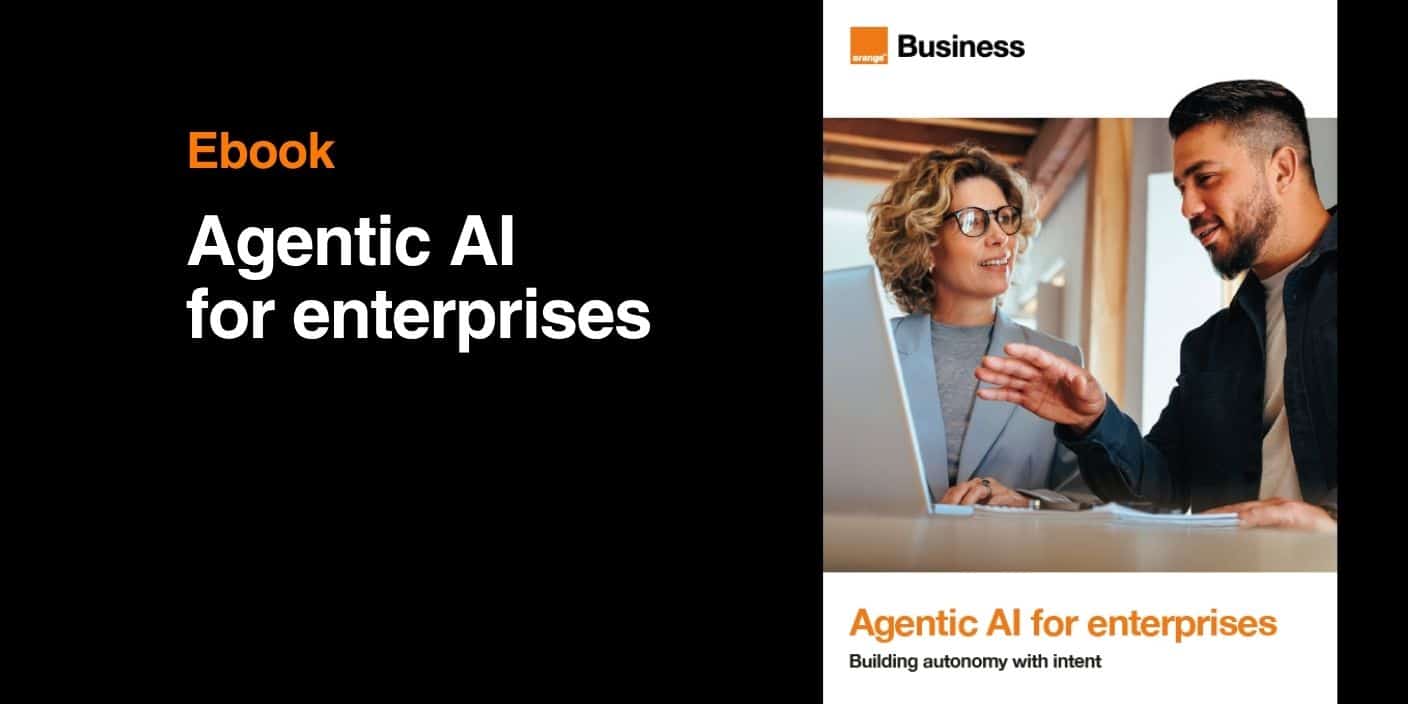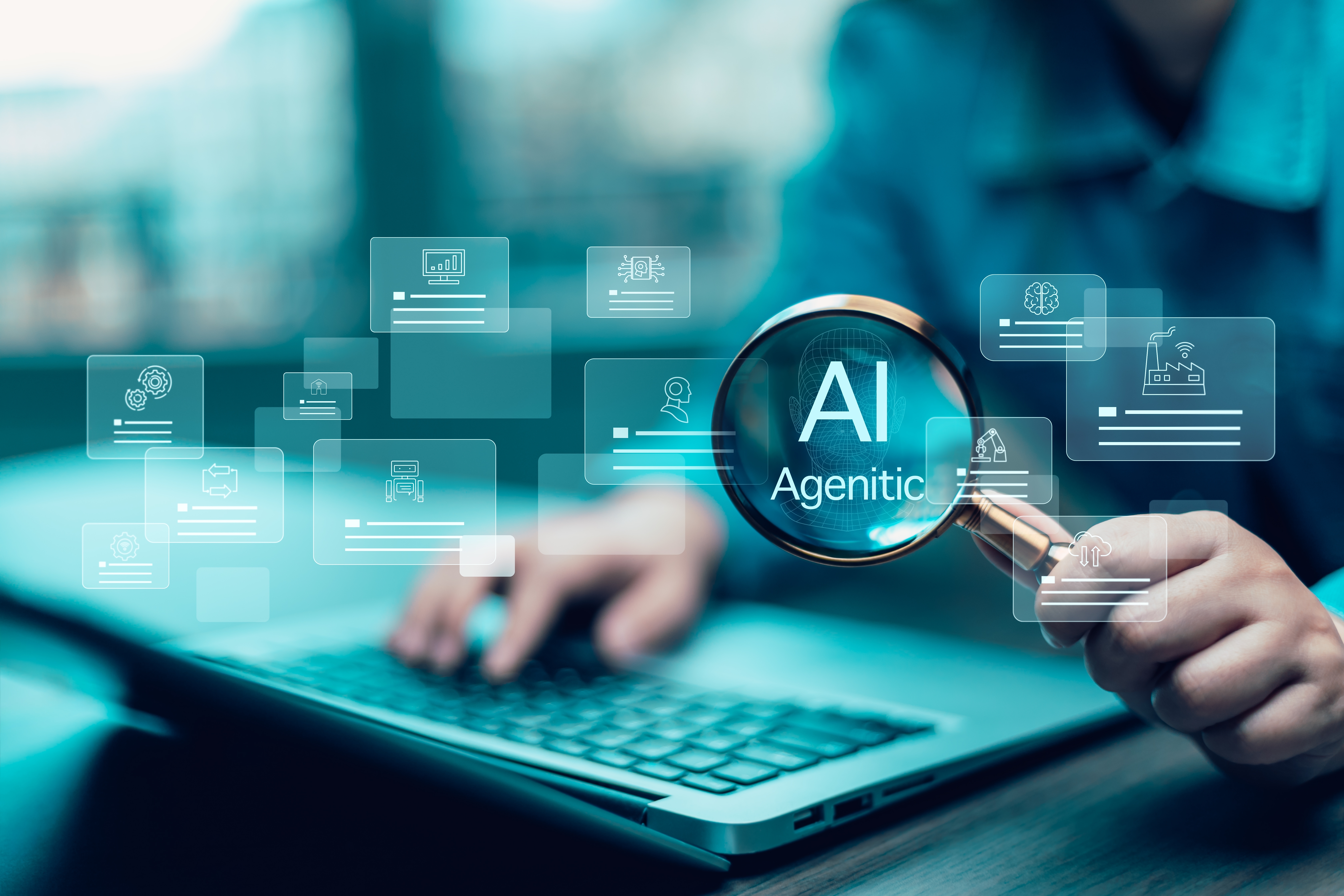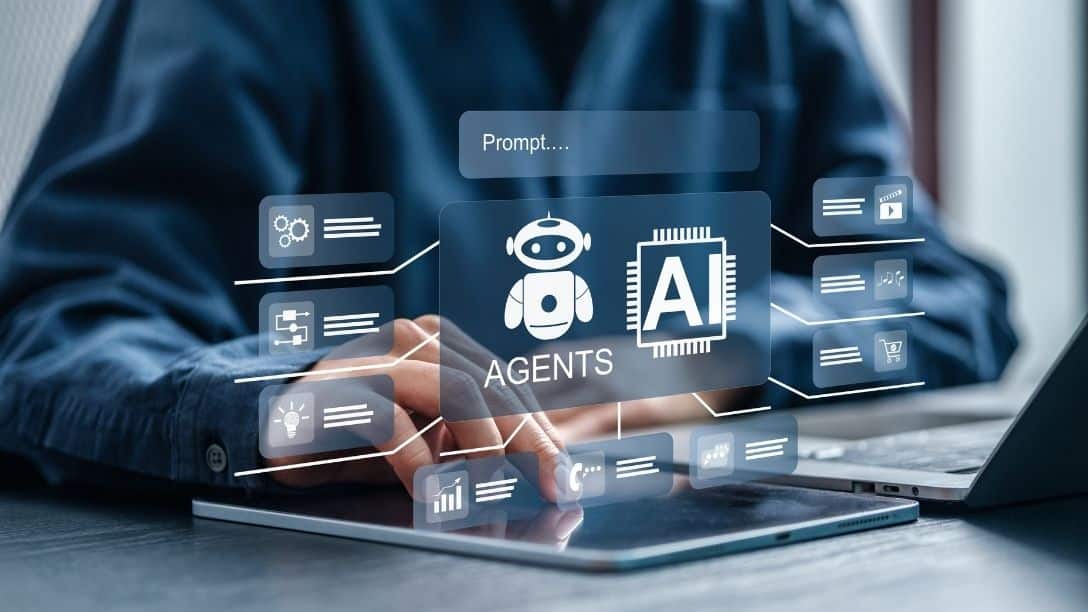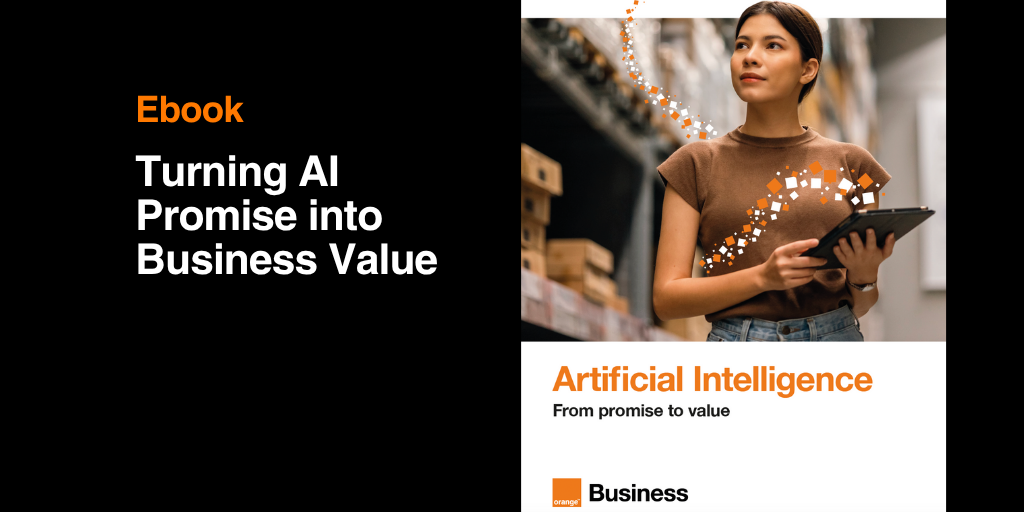With ChatGPT leading the way, alongside MidJourney and DALL·E, generative artificial intelligence has entered the mainstream—though not without creating some confusion. Generative AI technologies cover a wide range of tools and applications that businesses need to understand and harness. Here’s a closer look to clarify and demystify the subject.

What are the core technologies behind generative AI?
See moreAt the end of 2022, OpenAI launched ChatGPT, quickly enabling 100 million users to explore artificial intelligence and its possibilities. By Q4 2024, the startup had surpassed 200 million weekly active users. The conversational tool, along with many alternatives such as Mistral AI’s Chat, succeeded where previous Deep Learning and Machine Learning applications often remained too complex to grasp or largely invisible to the general public.
ChatGPT, together with DALL·E and Midjourney for image generation (among a multitude of other solutions, free or paid, proprietary or open source), has played a major role in popularizing artificial intelligence, and more specifically, a distinct branch of it: generative AI.
A new stage began in November 2022, as AI moved from being almost “silent” to becoming loud and unavoidable: omnipresent, highly publicized, understandable, and accessible to the masses. Generative AI is also steadily embedding itself into professional life, thanks in particular to its integration into office and collaboration tools such as Microsoft Copilot or Google’s Gemini.
But with such a disruptive and highly publicized arrival also comes confusion. While extensive media coverage has contributed to the democratization of these models, it has also fueled misconceptions and even myths. It is therefore worth clarifying some key concepts and explaining what generative AI truly is, and what it is not.
What is generative AI?
And why not ask ChatGPT directly?
“Generative AI is a branch of artificial intelligence focused on creating models and algorithms capable of autonomously generating data, images, text or sounds. It often relies on artificial neural networks and deep learning techniques to learn from existing data and generate new data that resemble what it has been trained on. Generative AI is used in many fields such as art, music, video, advertising, fashion, gaming and simulation.”
This is how ChatGPT defines generative AI, underlining the ability of this broad technological ecosystem to create content across multiple formats and from multiple sources. This characteristic is known as multimodality. For example, OpenAI’s GPT-4 is a generative, multimodal AI. It combines several types of data (text, voice, image, structured or unstructured data) with advanced processing algorithms. By contrast, its predecessor GPT-3.5 was limited to text only.
Generative AI models can be built for specific types of data. GPT-3.5, which powers ChatGPT, was trained exclusively on text – an unstructured form of data – which means it can only respond in text. Other models are specialised in images or video. Multimodal AI marks a turning point, with its ability to process multiple sources of data at once.
For businesses, generative AI has the potential to become a major lever for productivity.
And OpenAI is far from being the only player in this space. Other tech giants and newcomers have entered the race to multimodal AI and large language models (LLMs). Meta offers Llama 3.2 (in four models: 11B, 90B and the smaller text-only versions 1B and 3B). Google has released Gemini 2.0, Anthropic has Claude 3, and Mistral AI has Pixtral (12B), to name just a few.
Multimodality is by no means a finished story in 2025. It is expected to be one of the defining trends in generative AI this year, alongside autonomous agents.
Multimodality will play a central role in the wider adoption of AI, both by consumers and in the way humans interact with machines through new interfaces. OpenAI’s Sora, and its emerging alternatives, showcase what multimodality can bring to video generation.
Is generative AI a revolution or an evolution?
ChatGPT has in fact brought together and popularised pre-existing technologies, in particular large language models (LLMs). For text, these include GPT-3 and GPT-4 from OpenAI, and Google’s BERT – later redeveloped by the French startup LightOn into ModernBERT. GPT-3, for instance, was released back in 2020. Generative AI is therefore not a brand-new development of 2022 or 2023.
These models are also built on techniques that have been tested for years. GPT stands for Generative Pre-trained Transformer. Transformers, a deep learning architecture, first appeared in late 2017 in a research paper entitled Attention Is All You Need.
In that sense, the true revolution arguably lies with Transformers and LLMs, themselves made possible by earlier work on deep learning and neural networks. As AI pioneer Yann LeCun puts it: “ChatGPT and other large language models did not appear out of nowhere. They are the result of decades of contributions from many people.”
Supervised learning, an approach adopted by OpenAI, predates the creation of the company itself. The same is true for transformers, as well as the use of human feedback (RLHF – Reinforcement Learning from Human Feedback).
If there is a revolution, it stems from a wide range of contributions. Yann LeCun is careful to put OpenAI’s role and the innovation of these solutions into perspective. At the same time, he does not downplay the value of generative AI, which his employer Meta is heavily investing in.
Whether it is an evolution or a revolution is a matter for experts to debate. For businesses and AI users, the rise of generative AI is undeniably a game-changer. It represents a powerful lever for productivity, particularly in areas such as software development.
In this field of AI-assisted coding, some providers are tailoring their models to achieve ever greater performance. In May 2024, Mistral AI expanded its portfolio of open models with the launch of Codestral. The company continued to improve its solution and in January 2025 released the 25.01 version of Codestral.
Generative AI is not limited to text, even if this is where most businesses see the greatest potential today.
GenAI is both a driver of change in software and an opportunity for organisations to unlock an asset that remains largely underused: unstructured data (text, images, audio, video). Companies therefore have every reason to accelerate, moving from monitoring to ideation, and then to the implementation of concrete use cases.
This acceleration was clearly visible in 2023, and even more so in 2024. At the same time, it highlighted the complexity of deploying generative AI technologies at scale, and the difficulty of creating lasting, measurable value for organisations.
ChatGPT, DALL-E, GPT, Midjourney, LLM, transformers… why not mix them all up?
Explaining generative AI is no easy task, as it brings together a wide range of keywords, acronyms, tools and concepts. Let’s start by distinguishing ChatGPT from generative models. ChatGPT is a chatbot interface, designed to let users interact with a Large Language Model (LLM), in this case GPT, a generative text model. GPT itself is a Transformer-based model, built on a deep learning architecture.
ChatGPT is not the alpha and omega of generative AI. OpenAI may have been the first mover, but it does not define the field on its own. The difference between interface and model can also be seen with HuggingChat, the conversational bot available on the HuggingFace platform. Various LLMs hosted on the service can be connected to the interface through APIs – including, more recently, Llama 3.3 70B.
Generative AI is not limited to text, even if this is where most organisations see the greatest potential. This is particularly true in banking and insurance, where textual data is central. But it is far from the only sector concerned. Analysing and leveraging text is a cornerstone of knowledge bases – and these bases exist (often underused or poorly structured) across every industry.
Other formats of generative AI became popular with the wider public in 2022, with tools like DALL-E and Midjourney. These are image generators. DALL-E, created by OpenAI, produces images from text-based descriptions (prompts). Midjourney works on the same principle. Such tools are now widely used in professional contexts, for instance in marketing to generate visuals for online campaigns.
How do generative AI models work?
As introduced earlier, the purpose of generative AI is to produce content on demand, in response to a query called a prompt. To do this, it relies on a generative neural network. This type of network uses deep learning, combining supervised, unsupervised and reinforcement learning. This mix of learning modes is one of the key elements behind the power of these models.
Thanks to a vast training corpus (for GPT models, mainly public web data), the AI is able to generate new content. It does so by predicting the most likely sequence of words, piece by piece, until forming complete sentences. Generative AI works on a probabilistic basis. This explains why models such as GPT-3 or GPT-4 can sometimes produce incorrect results or pure fabrications – known as hallucinations. These errors, inherent to how the underlying models operate, are one of the technology’s main limitations. Safeguards and adaptations are therefore essential when bringing generative AI into enterprise use.
In many sectors – such as banking or healthcare – errors like those made by ChatGPT are simply not acceptable.
The quality of the data fed into the models is therefore a key lever in reducing hallucinations. This is precisely why, on 16 January 2025, Mistral AI announced a global partnership with AFP, the international news agency known for the quality of its reporting. The startup positions this alliance as a way to improve the accuracy and relevance of the answers generated by the model powering its conversational bot, Le Chat. With this move, Mistral is strengthening its competitive position in the market for…
What are the limits and risks of generative AI?
Errors, hallucinations, misinformation and manipulation are arguably the most tangible risks and misuses of generative AI models. In many enterprise use cases – in banking or healthcare, for instance – errors of the kind produced by ChatGPT are simply unacceptable. This is one reason why, so far, organisations have primarily deployed GenAI in support of their employees, rather than exposing end customers directly to model outputs.
Generative AI also raises legal questions. Models like GPT are trained on publicly available internet data. This large-scale scraping likely includes personal data as well as copyrighted content. Several lawsuits have already been filed, particularly against OpenAI, for copyright infringement. To mitigate legal risks, model developers are signing licensing agreements with publishers. Examples include OpenAI’s partnership with Le Monde in France, and Mistral AI’s 2025 deal with AFP.
Intellectual property is another area of concern. In the United States, Getty Images filed a lawsuit against Stable Diffusion, claiming the generative AI startup used its images to train models without permission, attribution or financial compensation.
Massive web scraping also risks the non-consensual capture of personal information. This raises the question of GDPR compliance. In March 2023, the Italian data protection authority (Garante) issued a temporary ban on OpenAI, citing serious doubts over ChatGPT’s compliance with the GDPR. In December 2024, it fined the company €15 million. In France, the CNIL (data protection authority) has also taken up the issue. In October 2023, it published its first recommendations for innovative AI that respects privacy, followed in July 2024 by a deployment guide for generative AI in business.
ChatGPT has not been banned in France. However, French MP Éric Bothorel filed a complaint with the CNIL over “false information” produced by the chatbot. Other individuals have also lodged complaints. The CNIL has since stepped up its oversight, publishing guidance and practical recommendations, setting up a dedicated AI department, and launching an action plan in 2024.
At the European level, regulators have taken broader initiatives, most notably the finalisation and adoption of the AI Act. This regulation, which entered into force on 1 August 2024, is designed to ensure the responsible development and deployment of AI within the EU. Its provisions will be phased in, with full enforcement scheduled for 2026.
💡 Why should businesses pay attention to generative AI?
The current momentum around generative AI is an opportunity for organisations. Today, pre-trained AIs are available, trained on large text corpora. To deliver value in line with business needs, these models must be further trained on company-specific data – which contains their know-how and domain expertise. This approach reduces investment costs, improves relevance, and lowers the risk of hallucinations. To optimise the output of generative models, companies often rely on their own knowledge bases, typically using Retrieval-Augmented Generation (RAG) systems.
Rapid adoption by the public has created expectations within the enterprise, adding pressure to provide employees with GenAI solutions. Just two months after launch, ChatGPT had already reached 100 million users – a record pace of adoption. In the absence of suitable solutions, or because internal deployments were considered too slow, employees began turning to unregulated generative AI applications. This phenomenon is now referred to as Shadow AI.
Generative AI deployment is not only a matter of offensive strategy. For businesses, GenAI is above all a way to create value – by boosting productivity, cutting costs, and creating new revenue streams.
Since ChatGPT’s debut, the number and variety of generative AI use cases in production have expanded rapidly. One Orange Business banking client, for example, uses these models to translate legacy systems coded in Cobol into a more maintainable language.
Google, both a digital giant and provider of the Gemini LLM, leverages generative AI for software code production. In late 2024, CEO Sundar Pichai revealed that 25% of the company’s new code was generated by AI.
Another example comes from an energy company responsible for maintaining multiple facilities. Technicians use tablets in the field to access documentation and write reports. All information is aggregated into a central database. A generative AI solution deployed by Orange Business then produces clear, readable summaries of operations and system status. A possible next step for the project is adding voice capabilities for technicians.
Cloud-based infrastructure and APIs make AI tools accessible to organisations, while also creating competitive advantages for early adopters. The automation they enable translates directly into productivity gains. Rapid adoption is therefore strongly recommended.
How to integrate generative AI into the enterprise
Speed does not mean rushing. The adoption of generative AI typically follows four main phases. The first is understanding. This involves awareness-building and training at different levels of the organisation, especially among leadership teams.
Employees must also be engaged to demystify the technology and identify real business needs. Turning these into formalised use cases is the second phase – ideation.
The 4 phases of generative AI adoption
📌 Awareness
📌 Ideation
📌 Technology choices
📌 Industrialisation
Since 2022, organisations have significantly reshaped their approach to generative AI, choosing to focus on fewer but more strategic use cases. They also make a clear distinction between the adoption of individual productivity tools (such as Copilot or Gemini) and larger-scale transformation projects that reshape organisational processes.
Once use cases have been selected, the next step is making the technology choices – and the options are many. Companies can use OpenAI APIs directly, rely on private environments such as Microsoft Azure OpenAI Services, GCP or AWS, or turn to open-source solutions (Llama/Alpaca originally developed by Meta, HuggingFace Bloom, Dolly, etc.) hosted in private cloud or on-premise environments.
The technology stream of these projects also requires defining how models will be trained or fine-tuned with enterprise data, and determining how generative tools will be integrated into the IT system and its applications. Industrialisation should not be overlooked either – adopting an MLOps approach is essential.
Technology alone is not enough in generative AI projects. Change management is critical, given the impact on roles and employees’ daily work. In other words: don’t underestimate change!
Within a structured, well-governed generative AI strategy, it can often be best to seek support in managing these different steps – from ideation through to deployment – to ensure end-to-end industrial processes.
What are the concrete business use cases for generative AI?
Use cases are multiplying rapidly in organisations. Examples include meeting summarisation, automated data sorting, code generation for developers or even for citizen developers.
The potential of such use cases is clear. However, the real value will likely lie in more specific applications. Customer relationship functions and contact centres, for instance, can leverage generative AI to roll out next-generation chatbots and voicebots, enabling true automation and self-service capabilities. Gartner predicts that conversational AI will reduce labour costs in contact centres by $80 billion by 2026.
And that is only one of many possible applications of generative AI. We will explore further opportunities available to businesses in a dedicated article.















Comments (0)
Your email address is only used by Business & Decision, the controller, to process your request and to send any Business & Decision communication related to your request only. Learn more about managing your data and your rights.